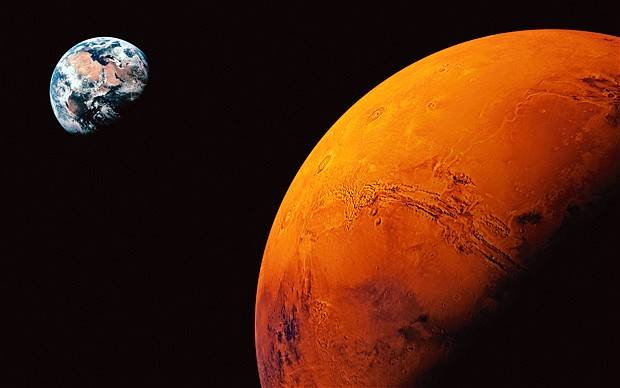Mars is the one planet where we, the humans, have sent a wide array of satellites and landing rovers. Currently, it has five spacecrafts orbiting it and two on the surface. We have been studying our smaller neighbour – the fourth planet from the sun – for decades, hoping to find signs of life. The Red Planet has fascinated humans from all cultures even before recorded history, and the start of the space age provided the opportunity to send spacecrafts to explore it.
The first successful flyby of Mars was in 1965 by Mariner 4. Since then we have discovered that it is a terrestrial planet, just like earth, with a thin atmosphere. Its features are similar to those on earth such as volcanoes, valleys, deserts and polar ice-caps. Water exists in these ice-caps as well as in the Martian atmosphere. There is also a lot of water ice underneath the permanent carbon dioxide ice cap in the south pole as well as in the subsurface of temperate latitudes.
On September 28, 2015, NASA confirmed that new findings from the Mars Reconnaissance Orbiter (MRO) provide the strongest evidence that liquid water also flows on the surface of Mars. John Grunsfeld, astronaut and associate administrator of NASA's Science Mission Directorate in Washington pointed to the significance of this breakthrough by saying: “Our quest on Mars has been to ‘follow the water,’ in our search for life in the universe, and now we have convincing science that validates what we’ve long suspected. “This is a significant development, as it appears to confirm that water -- albeit briny -- is flowing today on the surface of Mars.”
Before this, when people talked about water on Mars, it was with reference to ancient or frozen water. Earlier this year the Curiosity Rover detected the possibility of salty water below the surface, however the MRO discovery is the first evidence for the presence of liquid water in the present time.
With this news the world is abuzz with chatter about the possibility of finding life on the Red Planet. Because life, as we humans know it, is found where there is water.
And this means that technically Mars has the ingredients to support life! What amazing news that upright primates from a non-descript planet in a non-descript galaxy have, in a couple of centuries got to a point where their discoveries may mean that we are not alone. What a time to be alive!
There is of course a lot more research to be done and there is also the fact that the Curiosity and other rovers are physically unable to climb the steep slopes where the evidence for water is strongest. However, even if it could do so, it is not allowed to because of the Outer Space Treaty, according to which any planetary exploration shall be done in such a way as to avoid contamination from Earth. This is a big task because current rovers have not been sterilized to the extent that they can safely go to areas where liquid water is present, as was reported in CNET. Therefore, we may have to wait for a while before we can actually have evidence of life, or lack thereof, on the surface, possibly till 2020 when the next mission is planned.
Even so, these are exciting times replete with the possibility of finding out more about the Cosmos and in particular our Solar System and Earth. With seven spacecraft still being hosted there, new information will keep coming in as more and more data is processed. And who knows what the next lot will tell us. Whatever it will be, one thing is for sure: the Red Planet will continue to excite us.






